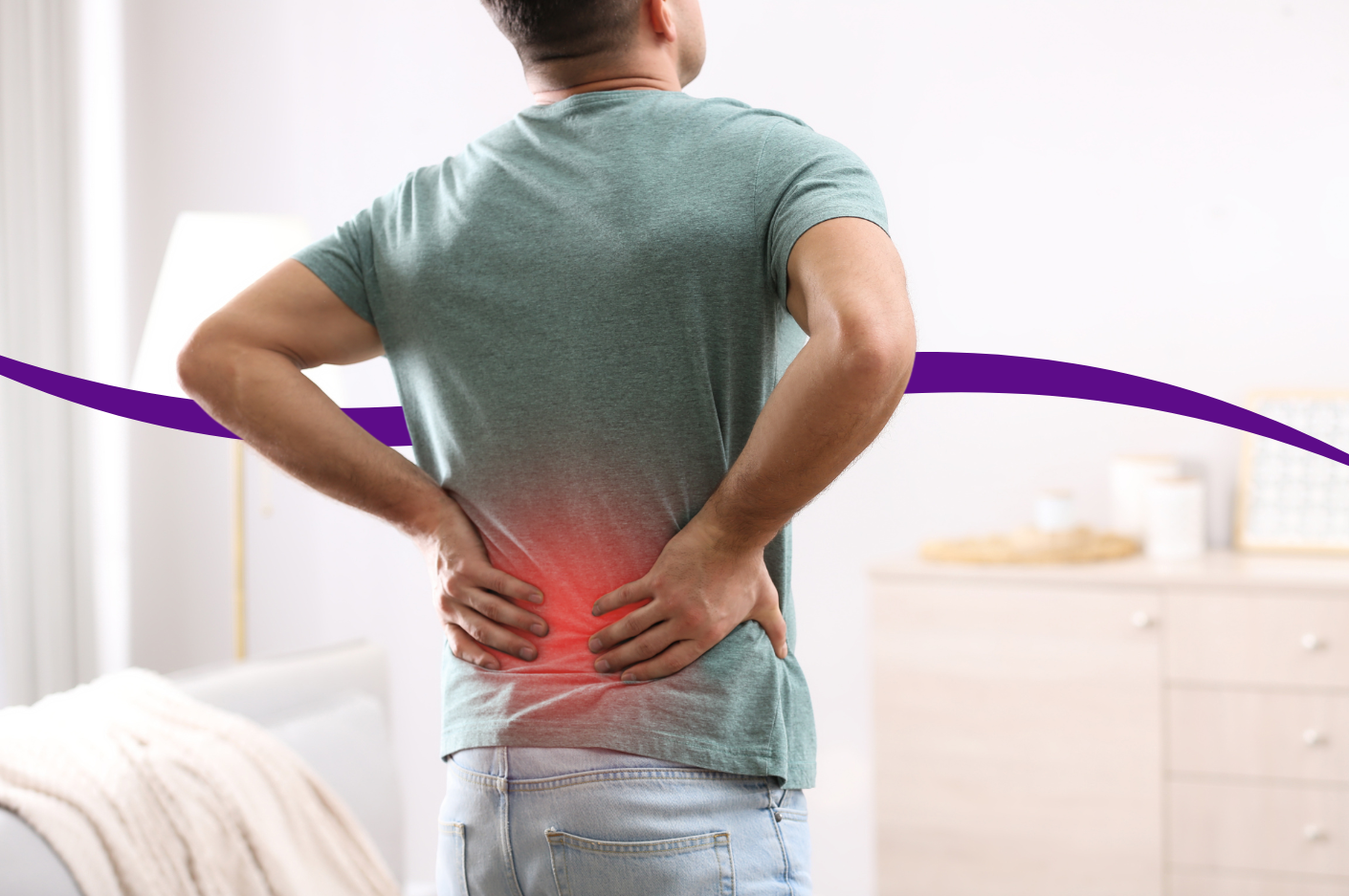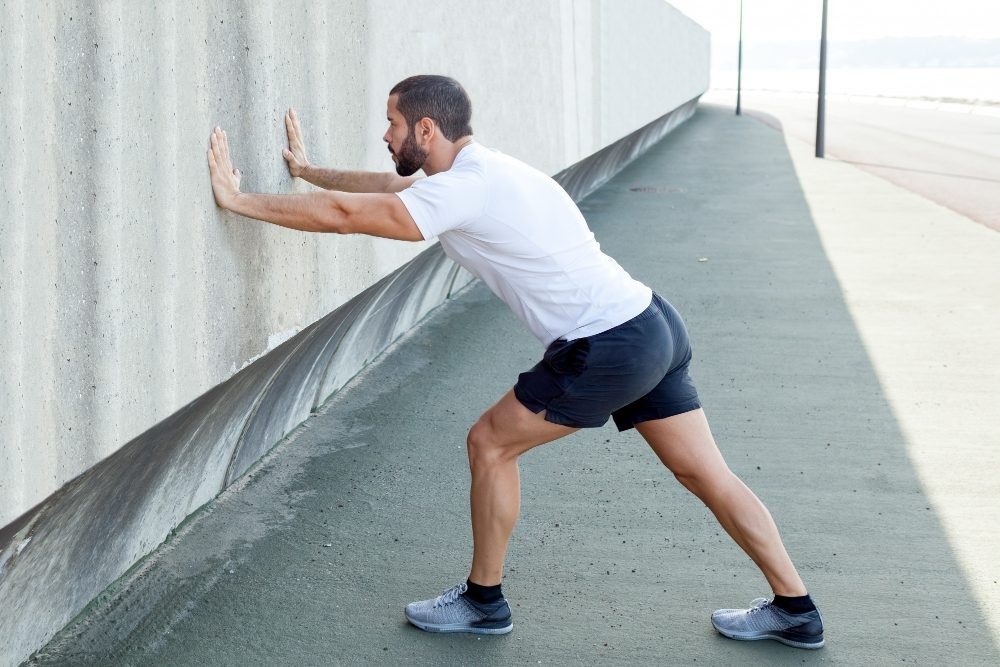

Getting pain at the back of your heel? You’re not alone. Achilles tendinopathy is one of the most common conditions that our podiatrists see and treat. It causes pain in the Achilles tendon, which is the largest tendon in your body that connects your calf muscles to the back of your heel bone. Your Achilles plays a crucial role in allowing your foot to move, helping you stand on your toes, and giving you the power to push off when you walk, run, or climb.
Achilles tendinopathy can develop from a single significant injury, but more often, it’s the result of many small, repeated injuries over time. While it’s common among athletes, it’s not exclusive to them - people who aren’t very physically active experience this pain too.
The pain associated with Achilles tendinopathy is usually felt at the back of your heel, whether it’s close to the bone or a little further up, about 2-6cm where the tendon connects to the back of the heel. The pain or discomfort from Achilles tendinopathy can come and go, often being most noticeable first thing in the morning or right after exercise. Unfortunately, without the right care, this pain tends to worsen over time (as the injury worsens), lasting longer and becoming more intense.
If you’re dealing with Achilles tendinopathy, there are several things you can try at home to help manage the pain, like icing the area, resting, and doing gentle stretches. We’ve detailed more home care steps you can take here. If the pain persists in the Achilles region for more than ten days, it’s time to seek help from a podiatrist. Early intervention is key. If you suspect you have Achilles tendinitis, getting it checked out sooner rather than later can make a big difference in your recovery so that you get better faster, with less discomfort, and with less hassle.
Shockwave therapy is often highly recommended for Achilles tendinopathy because it’s non-invasive and works by stimulating the body’s natural healing process through targeted shockwaves to the injured area. Custom orthotics are another favourite because of their ability to alter the way the foot is loaded and how you move through gait, easing the strain on the Achilles tendon with each step. MLS laser is fantastic for helping relieve pain and promote healing.
Surgery is rarely needed, only referred to in cases where you have a significant Achilles tear or rupture and need the tendon to be surgically repaired and reattached. However, even with successful surgery, some patients may find that high-impact activities like certain sports are no longer possible - at least to the same extent that they used to be able to do them. This is why it’s so important to diagnose and treat Achilles tendinopathy early. One component of a successful Achilles rehabilitation plan is physical therapy, meaning carefully stretching, strengthening and progressively loading the tendon.
If you have Achilles tendinopathy, you may experience some or all of the following symptoms:
When dealing with Achilles tendinopathy, the role of aerobic exercise in your recovery must be considered on a case-by-case basis. In some cases, gentle stretching and targeted exercises can aid in rehabilitation, helping to strengthen the tendon and improve flexibility. However, other cases may require a period of rest to allow the tendon to heal without further strain. In these cases, starting aerobic or high-intensity exercise too early can actually worsen the injury, setting you back weeks and causing more pain.
Your podiatrist will work closely with you and advise you on the best approach for your particular case based on the results of your assessments. We’re big fans of the benefits of exercise and leveraging it to help you get the best results, but it’s very important to keep you safe and progress you towards your goals. We may suggest temporarily switching to lower-impact options like walking, cycling, or water aerobics. These activities allow you to stay active without putting excessive stress on your Achilles tendon.
The key to a successful recovery is truly finding the right balance between rest and rehabilitation, ensuring that you’re not pushing your tendon beyond its current capacity.
When you step up your exercise routine significantly, whether you increase exercise intensity, duration and the like, you're pushing your body and making it more prone to injury. Achilles tendinopathy is much more likely to occur when the Achilles tendon is overworked, or when a load that's too high is put on it.
For this reason, you should gradually increase exercise at a steady pace. Our rule of thumb is to increase your exercise load by 10% each week. For example, if you're running 3 kms five times a week, you can increase the distance to 3.3kms for a week, before raising it another 10%. These increments will allow your body to adapt to the extended activity, and lower the risk of an Achilles tendon injury (and re-injury).
Strong calf muscles help reduce the strain on the Achilles tendon by absorbing more of the force generated during activities like walking, running, or climbing. Strengthening the calves improves the tendon’s ability to handle stress, promote better healing, and reduce the risk of further injury. Properly conditioned calf muscles also contribute to overall lower limb stability, making it easier to maintain a healthy, pain-free Achilles tendon in the long term.
Like strengthening exercises, stretches can be beneficial both to prevent Achilles tendinopathy and to treat it. As a preventative measure, stretches can help to increase flexibility in this area, which can help to stop injuries from occurring. As a treatment, stretching can help provide relief by loosening the area. To target the Achilles and calf areas specifically, you can do the stretches above.
Ill-fitting shoes or shoes with poor support can contribute to the development of Achilles tendinopathy. When exercising - especially during cardio or aerobic exercise - your Achilles tendon will be working with great force. As such, your shoe should always fit correctly and provide adequate support to prevent injury. Well-fitting and supportive shoes can release the tension in the tendon significantly.
If you don't give your body time to heal between intense workouts, your muscles will be more prone to injury, and any micro-tears that may occur can worsen. This is especially true if your body isn't used to being active for extended periods of time. If you feel any soreness after exercising or playing sport, you should rest until you feel normal again.
If you suspect Achilles tendinopathy, you should always have it checked out by a podiatrist - the sooner the better. Podiatrists are the lower limb experts, specialising in diagnosing and treating a wide range of foot and leg pains and problems, including Achilles tendinopathy.
Your podiatrist will complete a comprehensive physical exam to diagnose Achilles tendinopathy. They’ll then put together a
personalised treatment plan based on your assessment findings and your goals, as well as recommend stretches and exercises that can help
with related Achilles tendon pain.
Book your appointment with our podiatry team online
here
or call us on (07) 3356 3579.
| Monday | 7:40am - 6:00pm |
| Tuesday | 7:40am - 6:00pm |
| Wednesday | 7:40am - 6:00pm |
| Thursday |
7:40am - 6:00pm |
| Friday | TEMP CLOSED |
| Saturday | CLOSED |
| Sunday | CLOSED |
Ground Floor, 344 Queen Street,
Brisbane City QLD 4000
| Monday | 7:40am - 6:00pm |
| Tuesday | 7:40am - 6:00pm |
| Wednesday | 7:40am - 6:00pm |
| Thursday |
7:40am - 6:30pm |
| Friday | 7:40am - 5:00pm |
| Saturday | 7:40am - 4:30pm |
| Sunday | CLOSED |
Newmarket Village, 114/400 Newmarket Rd, Newmarket QLD 4051